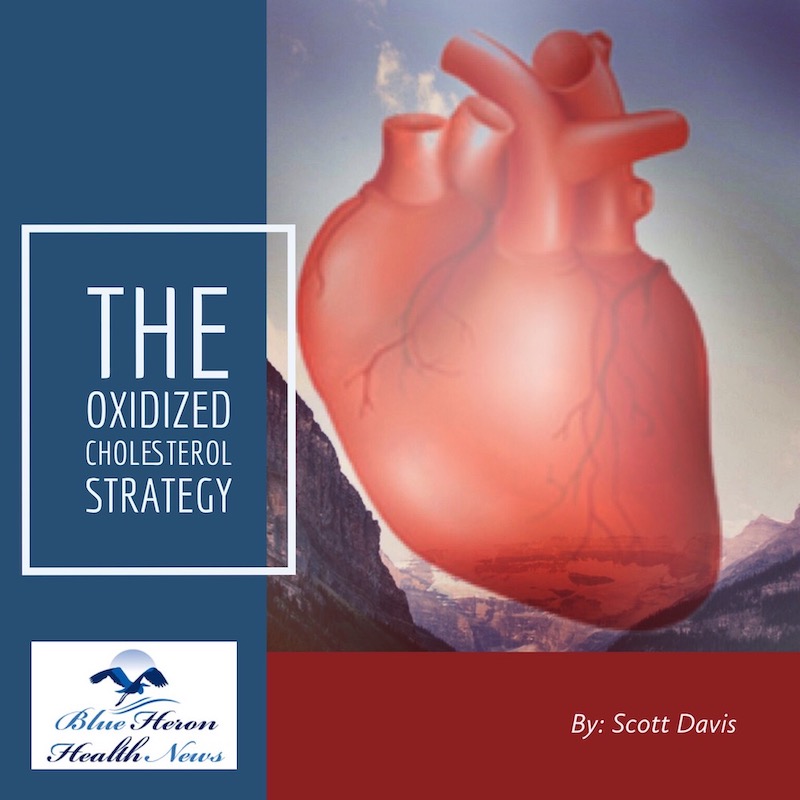
The Oxidized Cholesterol Strategy™ By Scott Davis The Oxidized Cholesterol Strategy is a well-researched program that reveals little known secret on how to tackle cholesterol plaque. This program will tell you step by step instructions on what you need to completely clean plaque buildup in your arteries so as to drop your cholesterol to healthy level.
What is the impact of oxidized cholesterol on mitochondrial function?
Oxidized cholesterol can have a significant negative impact on mitochondrial function, contributing to cellular damage and increased risk of various diseases. Here’s an overview of how oxidized cholesterol affects mitochondria:
1. Increases Oxidative Stress
- Generation of Reactive Oxygen Species (ROS): Oxidized cholesterol increases the production of reactive oxygen species (ROS) within the mitochondria. This heightened oxidative stress can damage mitochondrial DNA, proteins, and lipid membranes, impairing mitochondrial function.
- Reduced Antioxidant Defense: High levels of oxidized cholesterol can overwhelm the cell’s antioxidant defenses, further amplifying oxidative damage in mitochondria and reducing their capacity to function effectively.
2. Disrupts Mitochondrial Membrane Integrity
- Damage to Mitochondrial Membranes: The accumulation of oxidized cholesterol can disrupt the mitochondrial membrane’s structure, making it more permeable. This membrane damage can lead to a loss of membrane potential, which is crucial for mitochondrial energy production.
- Inhibited ATP Production: Mitochondria produce energy in the form of adenosine triphosphate (ATP), which requires a stable membrane potential. Damage to the membrane impairs the electron transport chain, leading to reduced ATP production and energy deficiency in the cell.
3. Induces Mitochondrial Dysfunction and Apoptosis
- Mitochondrial Dysfunction: Oxidized cholesterol interferes with normal mitochondrial function, contributing to energy deficits, decreased efficiency in ATP synthesis, and eventual mitochondrial dysfunction. This can lead to cell fatigue, particularly in high-energy demand tissues like the heart and muscles.
- Apoptosis Activation: Oxidized cholesterol can trigger mitochondrial-mediated apoptosis (programmed cell death) by releasing pro-apoptotic factors, such as cytochrome c, from damaged mitochondria into the cytosol. This process leads to cell death and contributes to tissue degeneration, especially in the cardiovascular and nervous systems.
4. Triggers Inflammatory Pathways
- Activation of Inflammatory Responses: Oxidized cholesterol can activate mitochondrial inflammatory signaling pathways, such as the NLRP3 inflammasome, which is associated with chronic inflammation. This inflammation can exacerbate mitochondrial damage and lead to further cellular injury.
- Impairment of Mitochondrial Quality Control: Inflammation triggered by oxidized cholesterol can also impair mitochondrial quality control mechanisms, like mitophagy (the selective degradation of damaged mitochondria). This leads to an accumulation of dysfunctional mitochondria, further impacting cellular health.
5. Inhibition of Mitochondrial Biogenesis
- Reduced Mitochondrial Regeneration: Oxidized cholesterol disrupts the normal biogenesis of mitochondria by interfering with key regulators, such as peroxisome proliferator-activated receptor gamma coactivator 1-alpha (PGC-1α). This inhibition limits the cell’s ability to produce new, healthy mitochondria, leading to reduced mitochondrial numbers and efficiency.
- Increased Cellular Senescence: As mitochondrial biogenesis declines, cells may enter a state of senescence (aging), marked by reduced functional capacity and increased inflammation, further diminishing mitochondrial health.
6. Impact on Cellular Metabolism and Energy Demand
- Metabolic Dysregulation: With mitochondrial dysfunction, cellular energy production becomes inefficient, which can alter normal metabolic processes. Cells may shift towards glycolysis (anaerobic metabolism) to meet energy demands, leading to an accumulation of metabolic byproducts and decreased overall energy.
- Risk of Disease Development: Oxidized cholesterol’s impact on mitochondrial dysfunction is implicated in the development of several diseases, such as cardiovascular disease, neurodegenerative conditions (like Alzheimer’s disease), and metabolic disorders, which are all linked to compromised mitochondrial health.
Summary
In summary, oxidized cholesterol impairs mitochondrial function through increased oxidative stress, disruption of membrane integrity, activation of inflammatory pathways, and interference with mitochondrial biogenesis. These effects can lead to cellular energy deficits, increased cell death, and contribute to the progression of various chronic diseases. Maintaining healthy cholesterol levels and limiting oxidized cholesterol intake through diet and lifestyle choices can help protect mitochondrial function and overall cellular health.
The Oxidized Cholesterol Strategy™ By Scott Davis The Oxidized Cholesterol Strategy is a well-researched program that reveals little known secret on how to tackle cholesterol plaque. This program will tell you step by step instructions on what you need to completely clean plaque buildup in your arteries so as to drop your cholesterol to healthy level.
